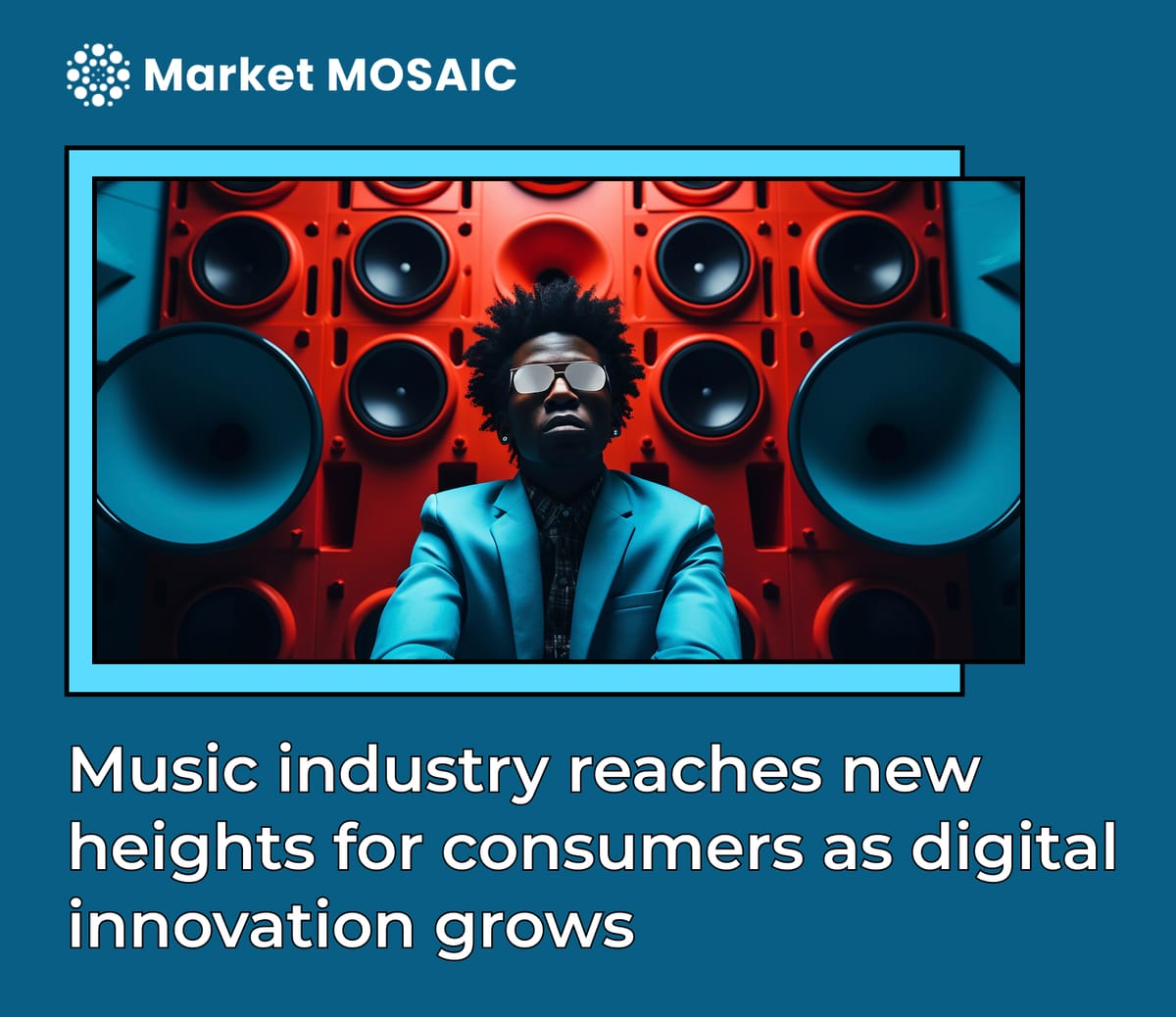Music industry reaches new heights for consumers as digital innovation grows

The global music industry is composing one of its most powerful comeback stories. In 2023, recorded music revenues surged by 4.8%, reaching an all-time high of $29.6 billion, according to IFPI. But this isn't just a story about the business of music, it’s a sharp reflection of how consumers now value convenience, nostalgia, and immersive brand experiences, all at once.
How streaming became the music Industry’s power center
For the first time in history, streaming revenue surpassed $20 billion, accounting for 69% of global music revenue, a defining milestone that marks more than just growth. This is a structural shift in how music is consumed, monetized, and distributed worldwide.
What makes this transformation so profound is the way streaming platforms, like Spotify, Apple Music, and Tencent Music have redefined the entire user experience. Instead of purchasing individual albums or tracks, consumers now subscribe to an always-on, unlimited catalog of songs. This model caters to a mobile-first generation that expects instant access, curated recommendations, and seamless integration across devices.
At the core of this success is data-driven personalization. Streaming platforms analyze listening habits to offer hyper-targeted playlists, mood-based stations, and algorithmic discovery, making music feel tailored to each listener’s taste and lifestyle. This personalized, on-demand approach has turned passive listeners into engaged users, increasing daily usage and platform loyalty.
Streaming offers predictable, recurring revenue through subscription models, and also opens up ad-based monetization for free-tier users, creating a dual-income engine that didn’t exist in past music formats.
Ultimately, this isn’t just momentum, it’s market transformation at scale. Streaming has become the foundation of the modern music economy, reshaping consumer behavior, artist strategies, and industry economics all at once.
Yet amid digital dominance, something unexpected continues to spin…
Vinyl sales rise in a digital world
Vinyl records, those large, analog discs once thought obsolete in the digital era have now logged their 18th consecutive year of growth, rising by 4.6% . Originally the dominant format for music consumption throughout much of the 20th century, vinyl was nearly wiped out by CDs and later digital streaming. Yet in a striking reversal, it has reemerged as a premium, collectible format favored by audiophiles, artists, and younger listeners seeking more tangible, authentic connections to music.
In a world dominated by digital convenience, vinyl’s continued growth highlights a deeper consumer insight: people still crave tangible, premium experiences. This isn’t just about nostalgia, it reflects a desire for products that offer personal meaning, and a sense of identity. Vinyl’s rise is a signal to businesses across industries: consumers don’t want only efficiency, they want emotional connection. And they’re willing to pay for it.
Music powers brand engagement and live performance in a video-first internet
Sync licensing revenues—from music used in ads, films, games, and online content grew by 7.4%. In today’s creator-driven economy, music has become a strategic tool for attention. From TikTok challenges to cinematic Netflix intros, brands are investing in sound to boost recall, relatability, and resonance. The growth of sync signals a larger truth: content without music feels empty and the brands that get this are winning consumer mindshare.
Live, shared music experiences are also back with a bang. Performance rights revenues grew 5.3%, surpassing pre-pandemic levels. From cafés and retail spaces to festivals and sporting arenas, music is once again a central part of public life. This reflects renewed consumer confidence in community experiences and in-person entertainment.
Insight for executives
For business leaders, the takeaway is clear: digital convenience is no longer a competitive advantage, it’s the baseline. What sets companies apart today is the ability to craft premium, emotionally resonant experiences. Vinyl’s continued rise underscores consumers’ demand for products that feel personal, tangible, and culturally rooted.
At the same time, the growth of sync licensing shows how strategic partnerships can turn content into commerce. Music in ads, games, and digital storytelling is no longer background noise, it’s a core driver of engagement and brand recall.
Most crucially, the music industry thrives on diversified revenue streams. Subscriptions, licensing, physical sales, and performance rights work in tandem to create resilience in a volatile market—a model worth emulating.
As WIPO notes, the last decade saw music evolve from piracy panic to platform power. What lies ahead is a landscape where AI-generated content, immersive sound tech, and creator monetization models further redefine engagement. Blending convenience with culture, tech with touch, and data with emotion is the key to consumer connection.





